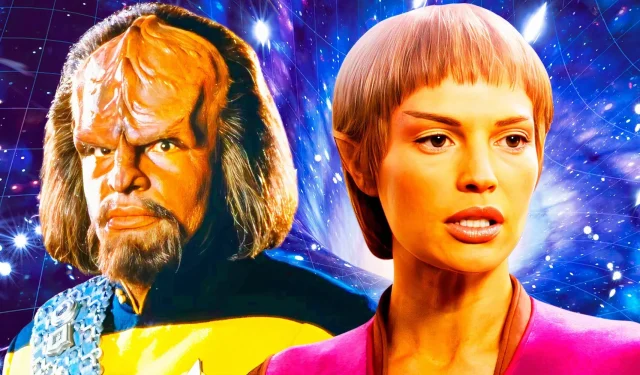
In the expansive universe of Star Trek, the portrayal of alien races such as the Vulcans and Klingons has shifted dramatically over the years. Initially introduced in the iconic Star Trek: The Original Series (TOS), both races were presented with relative simplicity, serving primarily as obstacles for Captain James T. Kirk (William Shatner) and his crew. However, as the franchise evolved, so too did the depth of these species, particularly in Star Trek: The Next Generation (TNG) and Star Trek: Enterprise.
Gene Roddenberry, the creator of Star Trek, originally intended Star Trek: The Next Generation to distance itself from the familiar aliens of TOS. Particularly, he sought to downplay the significance of the Klingon Lt. Worf (Michael Dorn). However, Worf became a fan favorite, ultimately playing a pivotal role in exploring Klingon culture, politics, and its corrupt elements, which were cleverly integrated into the series’ narrative. TNG changed the landscape for Klingon lore by exposing the flawed nature of their political system, a nuance that TOS did not explore.
Exploring Corruption: Enterprise’s Vulcans and TNG’s Klingons
Parallels Between Corrupt Vulcan Politicians and Klingons

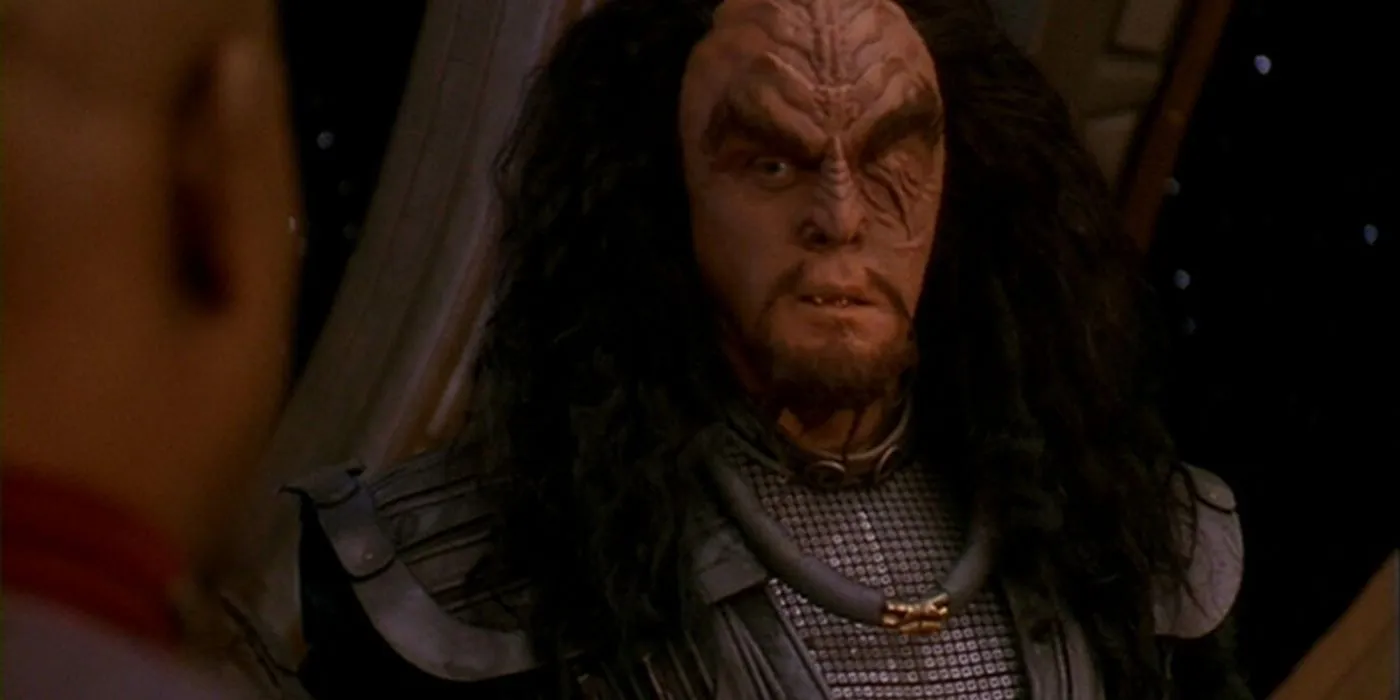
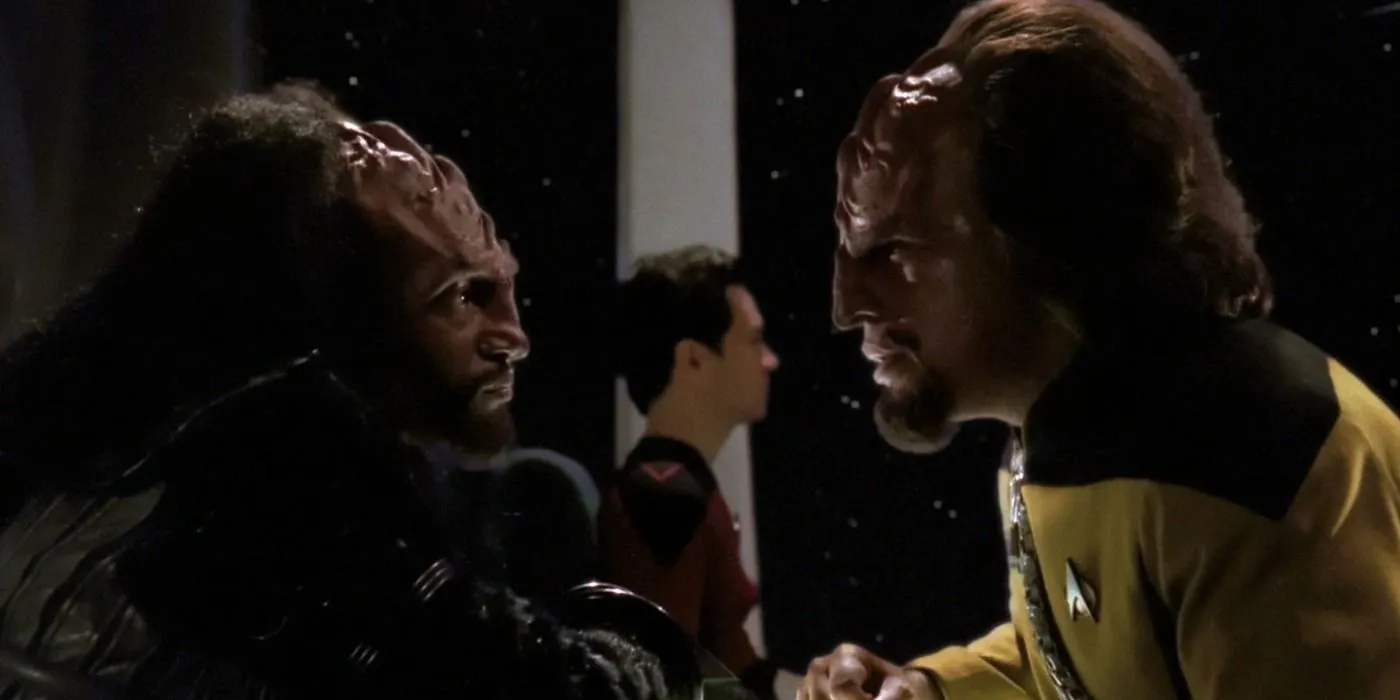
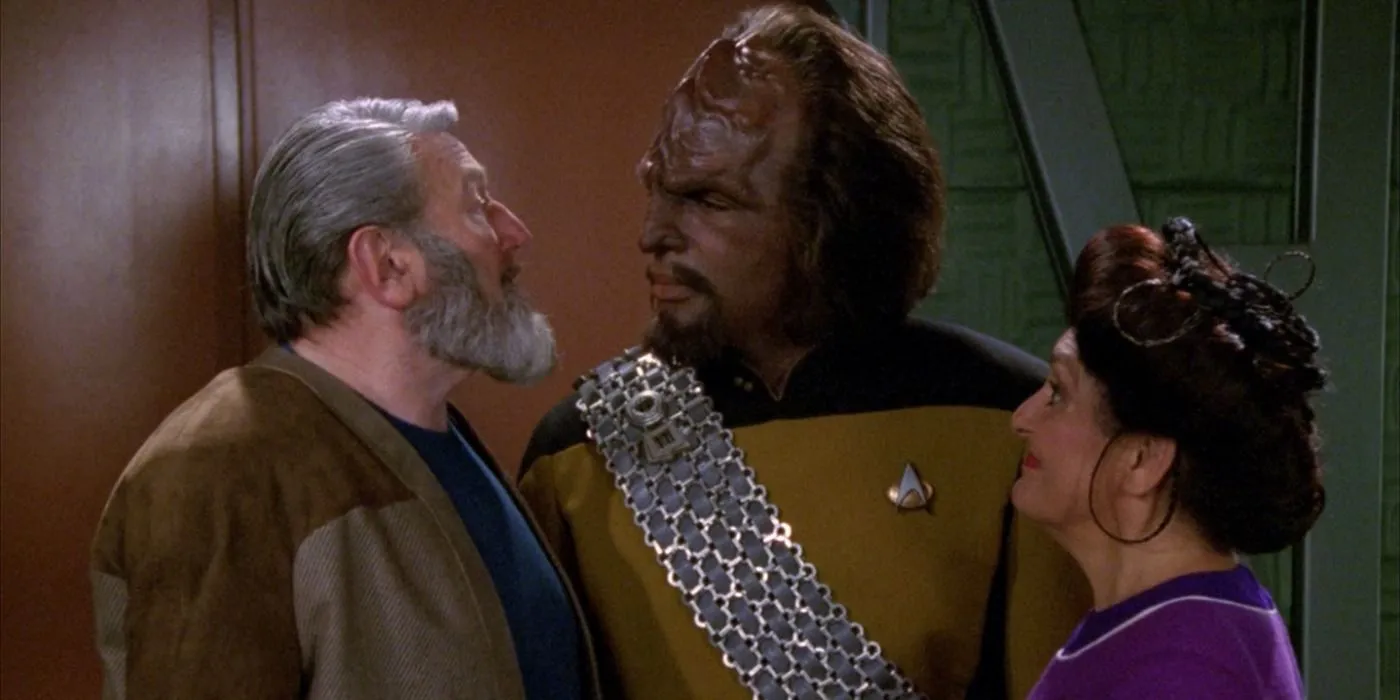
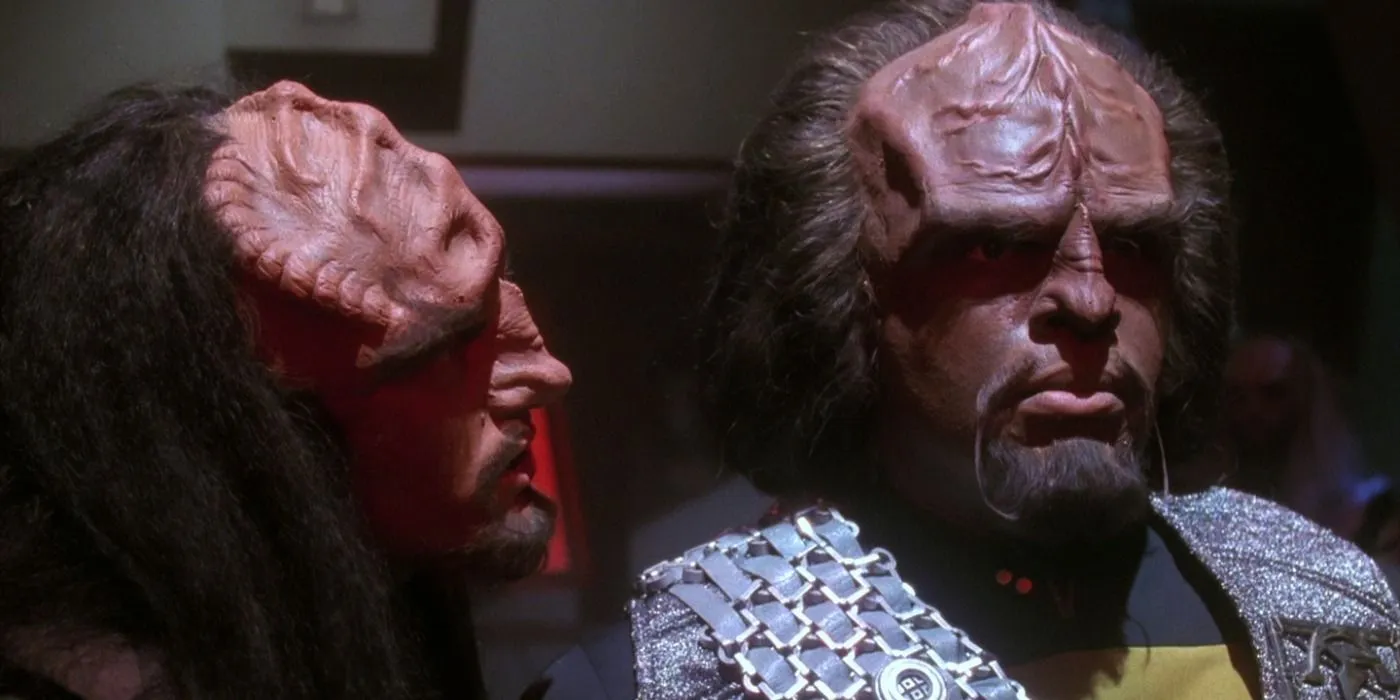
Star Trek: Enterprise, being a prequel to TOS, delved into the political landscape of the 22nd century as it charted humanity’s rise and its interactions with Vulcans following their First Contact. Despite initial cooperation, concerns arose among certain Vulcans about Earth’s readiness to explore the stars. This distrust led to attempts by some Vulcan leaders to undermine relations with humanity for their own agendas. Much like the corrupt Klingons seen in TNG, Enterprise’s Vulcans were also portrayed as having ulterior motives, particularly among high-ranking officials.
As the narrative unfolds in Star Trek: Enterprise, a significant plot arc in Season 4 reveals a Romulan conspiracy aimed at creating a rift between Vulcan and humanity. With Captain Jonathan Archer (Scott Bakula) at the helm, the crew unravels a scheme orchestrated by Vulcan High Council’s Administrator V’Las (Robert Foxworth), who colluded with Romulan agents. This included orchestrating attacks, such as the bombing of the United Earth Embassy on Vulcan, which he deceptively placed at the feet of the Syrrannites. Archer, alongside T’Pol (Jolene Blalock) and T’Pau (Kara Zediker), ultimately intervened to thwart the Romulan mission of destabilization.
T’Pol and Worf: A Study of Confronting Corruption
Parallels in Their Journeys

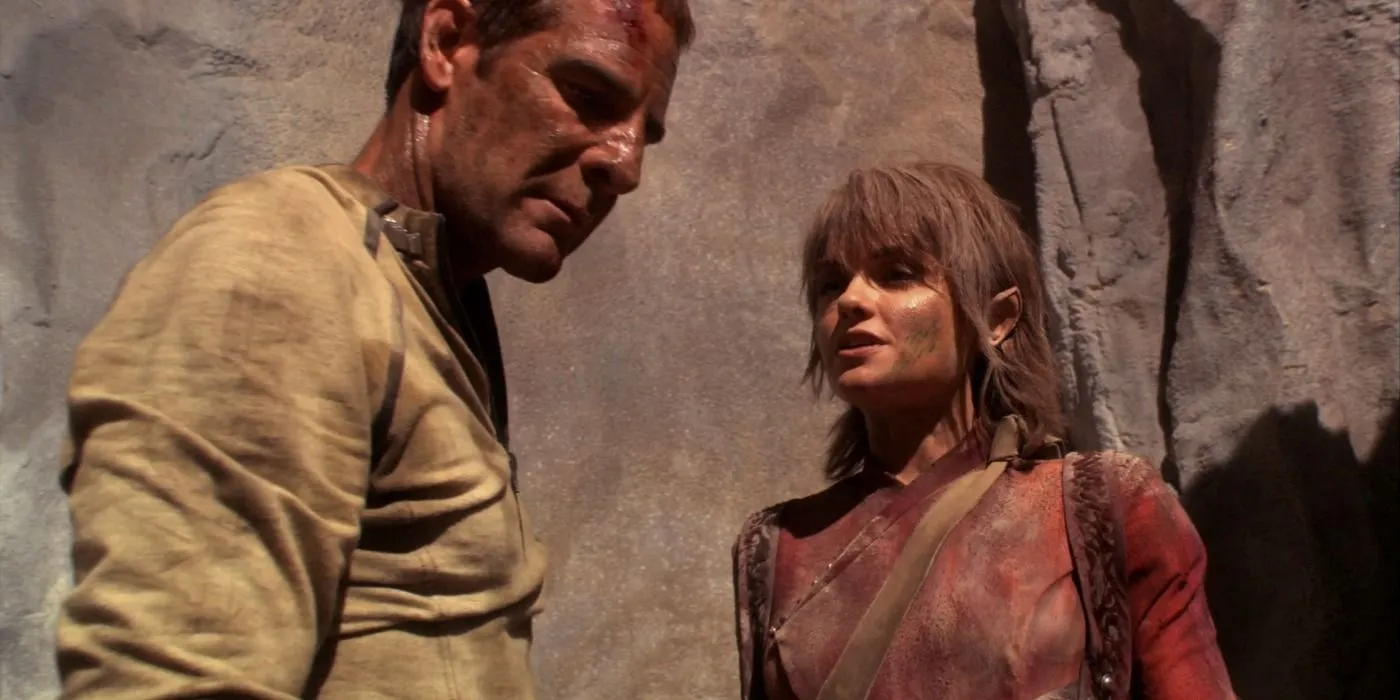
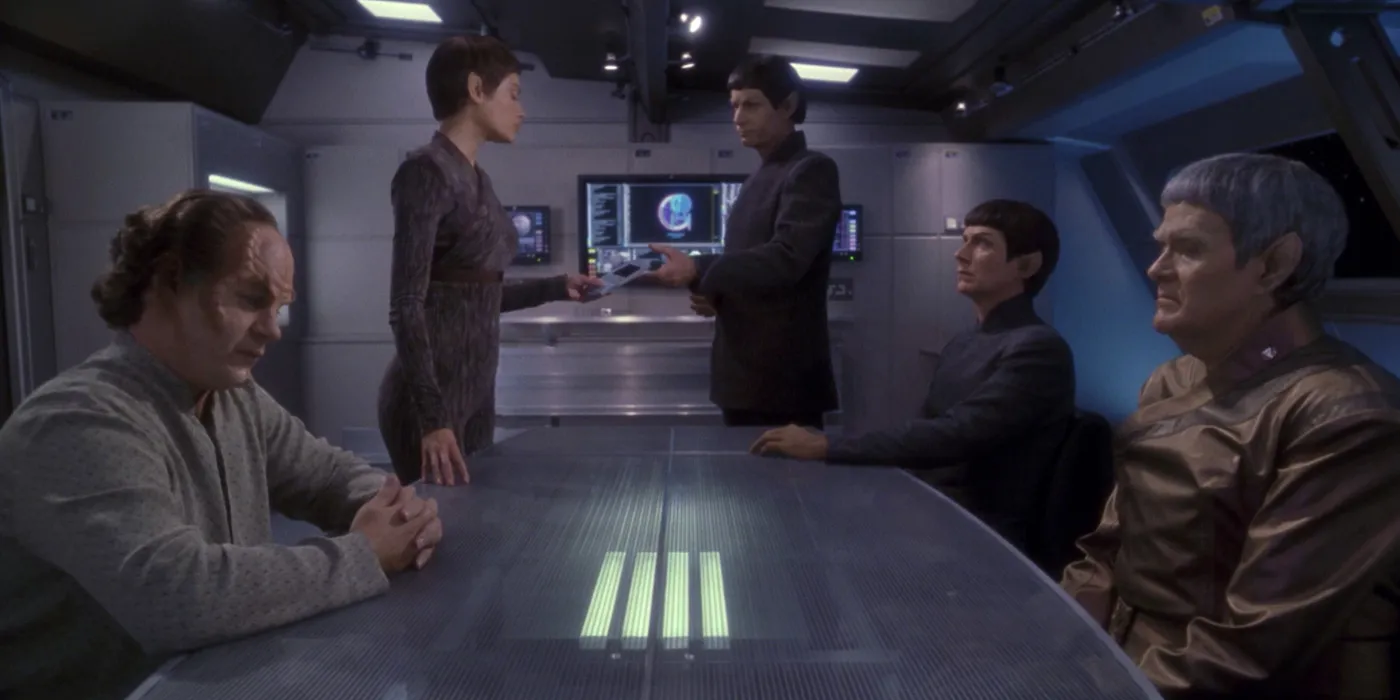
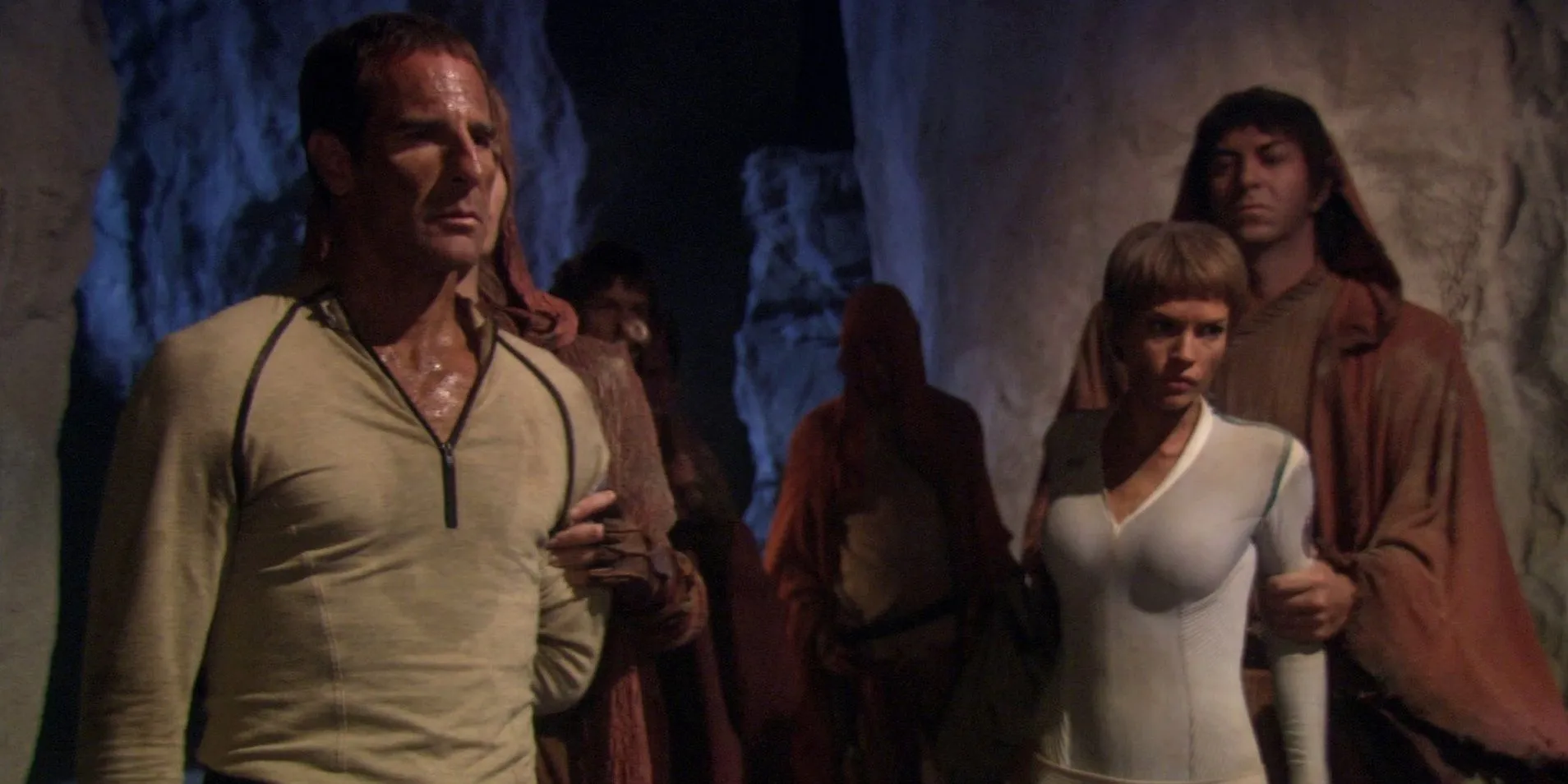
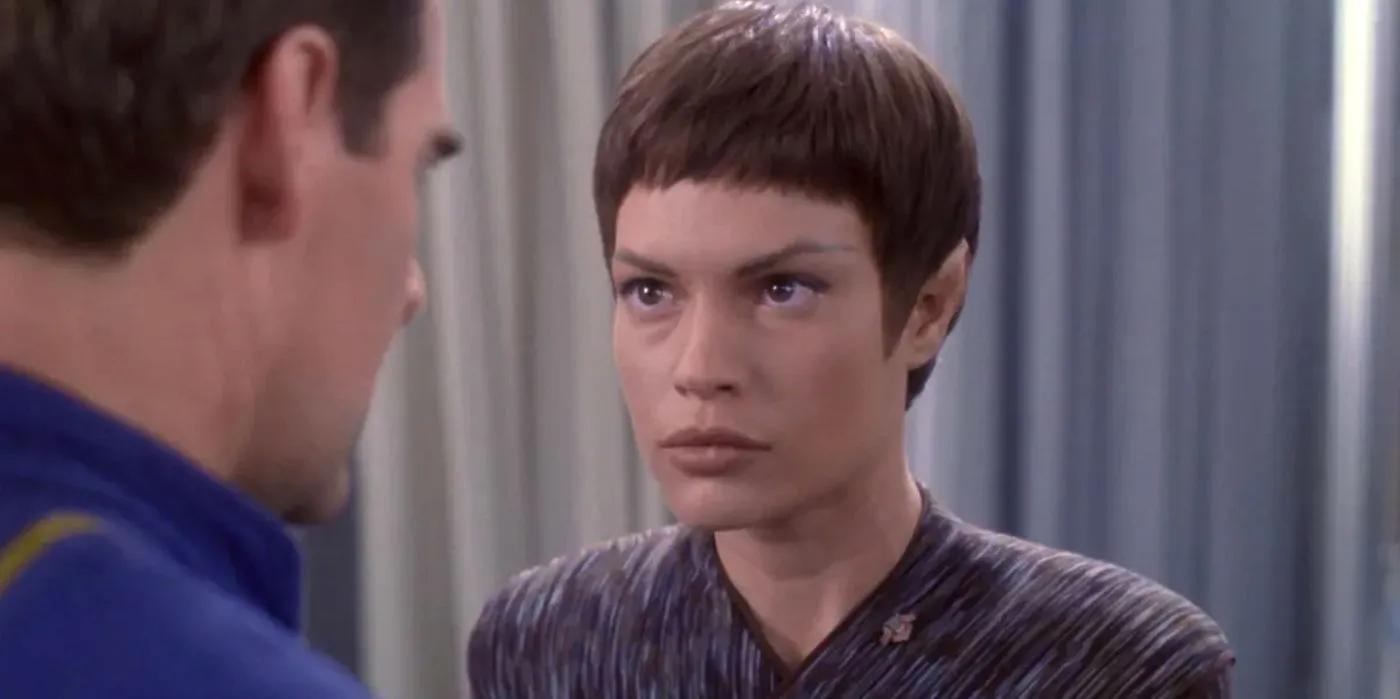
In many ways, the journeys of T’Pol and Worf resonate with each other. Despite his human upbringing, Worf embodies the essence of Klingon honor, navigating his identity amidst a culture riddled with its own complexities. T’Pol, similarly, navigates her allegiance, often conflicting with Vulcans who lack the foresight and integrity associated with Starfleet’s goals. When faced with the mission to pursue the Xindi following an attack on Earth, T’Pol defied orders to return to Vulcan, mirroring Worf’s own defiance when he faced discommendation yet chose to stay aboard the USS Enterprise-D.
Ultimately, T’Pol’s efforts in exposing the insidious Romulan influence in Vulcan High Command ushered in a transformative period for her people, encouraging a return to the principles taught by Surak. While their circumstances differ, both T’Pol and Worf confront the reality that their cultures are flawed, grappling with the challenges of representing their races on predominantly human ships. Their legacies, woven into the narratives of Star Trek: Enterprise and Star Trek: The Next Generation, demonstrate their vital contributions to cultivating stronger alliances between their species and the United Federation of Planets.




Leave a Reply